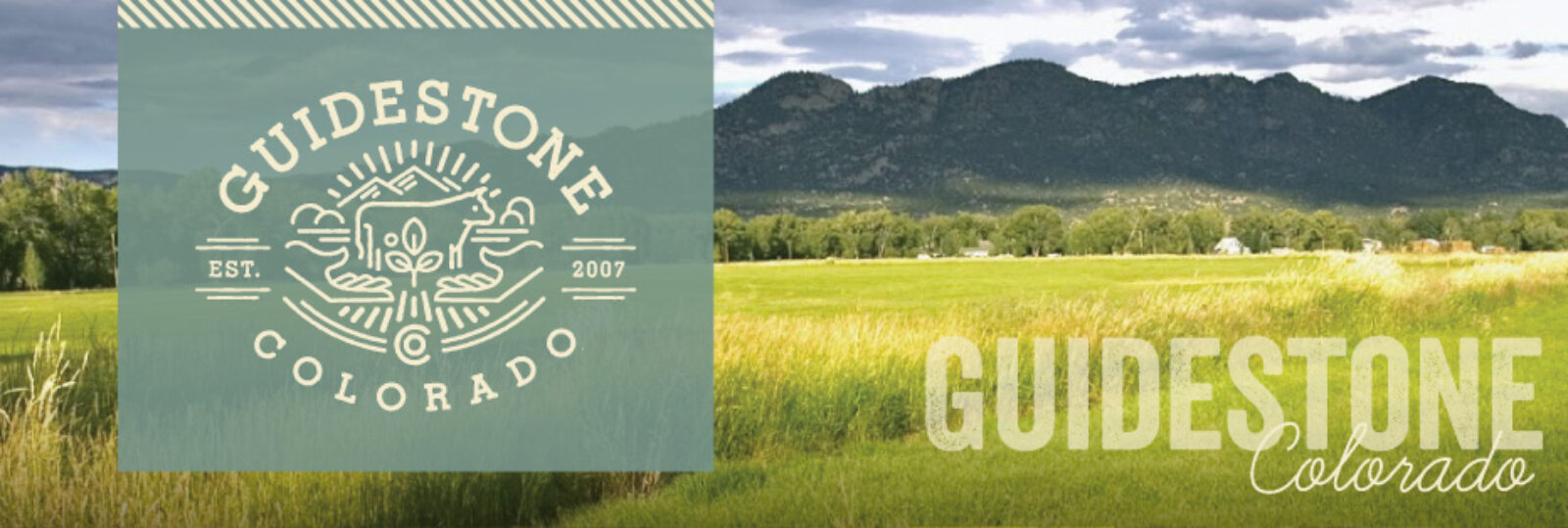*This is the 3rd and final in a series written by Guidestone’s AmeriCorps OSM/VISTA member Gunnar Paulsen about Guidestone’s Colorado Land Link events forthcoming in March – the 2nd Annual Land Link Forum and Certified Farm Succession Coordinator Training.
The 2nd Annual Land Link Forum is coming up quick, March 7-8th to be precise! The theme of this year’s Forum is Farm Succession Planning (see previous post for more on this topic) and one of the sessions we’re excited about is The Role of Conservation in Farm Succession Planning. I recently had a chance to sit down with Andrew Mackie, Executive Director of the Land Trust of the Upper Arkansas (LTUA), and ask him some questions about the session and panel he has assembled, the role of Colorado Land Link in meeting the conservation goals of LTUA, and about tools the conservation community offers for agricultural producers and farm succession planning.
Conservation has become an important tool for protecting and preserving farmland across America. Taking its inspiration from the founding of Earth Day in the 1970s, a movement of community land trusts started to take shape. Land trusts are non-profit, private organizations dedicated to protecting open space, which can include farmland, wildlife habitat and other sensitive landscapes. The primary tool for accomplishing this preservation has been the conservation easement. Conservation easements are agreements entered into between a landowner and a land trust that are mutually beneficial. In exchange for some limits on property rights, such as, say, where buildings can be placed, or where farming or grazing can occur, landowners receive tax incentives. When a parcel of land is put into easement, it is permanent; in the language of land trusts it is “protected in perpetuity.” To date, 2.7 million acres of farmland has been protected by conservation easement.
However, it is not always a sure thing that farmland protected by an easement will remain in agricultural production after that land is sold or the farmer retires (see an interesting report from the NYFC on this matter here). To this end, I asked Mr. Mackie what steps LTUA is taking to help beginning farmers and ranchers become conservation buyers. “We partner with Guidestone’s Colorado Land Link and have supported that program through its development” because, he said:
It is in the interest of the entire land conservation community to make sure that we have a strong, active community to take over these properties as the landowners decide to retire or move on to something else. It is in our interest to have educated, business-smart farmers and ranchers, and if we don’t, we’re going to have a hard time keeping that conservation value the way its intended to be maintained throughout time… Colorado Land Link helps connect us with those qualified buyers.
When it comes to helping farmers and ranchers succeed as conservation buyers, Mackie is frank that it is not just the work of one organization, but a network that includes NRCS, Cooperative Extension, and services like Colorado Land Link. “As an organization, we realize that agriculture has a very important role in both the preservation of open space and the economy of the United States. It’s only by working together that we’re going to keep that.”
I also asked what incentives exist in Colorado for non-agricultural landowners to rent their easement-protected land to farmers or ranchers and the first thing Andrew mentioned was the water rights principle of “use it or lose it.” This refers to the Colorado Water Law’s presumption that if a water right has not been exercised for a consecutive 10-year period it has been abandoned, at which point that right is placed on the abandonment list and can be given to another applicant. And if that happens, “they’ve just given up a private property right that they had that comes with a dollar value associated with it, sometimes a very high dollar value,” says Mackie. So, one way to keep your water right and to receive further tax breaks through Colorado’s statewide Agricultural Exemption Program is to rent your land for agricultural purposes, which of course will exercise a landowner’s water right. “Sometimes that can be enough for a landowner and they don’t need to recoup a lot from the lease because they’re making it up in tax savings.”
In looking forward to what attendees can expect to learn from the Land Link Forum’s conservation workshop on Friday March 7th– the panel of which includes Ginger Davidson of the Palmer Land Trust, John Stulp, Special Policy Advisor to the Governor on Water, Ben Guillon of WetlandsResearch Associates, Bill Gardiner of the NRCS, and Cindy Lair, StateConservation Program Manager – Mackie says “we’re really trying to give a broad perspective of all the conservation programs and services available to ag. producers.” This will include some of the traditional land trust programs, such as conservation easements, but also about “some of the more cutting edge stuff too, including the new water plan for the state of Colorado… and we’re going to look at other programs that provide economic benefit to landholders, such as wetland mitigation banking on agricultural land, programs such as EQIP (Environmental Quality Incentives Program), and Western SARE’s (Sustainable Agriculture and Research Education) programs. Our hope is that whether you’re new, or experienced you can become familiar with these programs and start plugging them into your overall plan for your operation.”
We’re excited to learn more about these innovative programs for farmers and ranchers and hope to see you there! For information on other programming at the 2ndAnnual Land Link Forum, and to register for the event (the registration deadline is March 3rd), click here.

